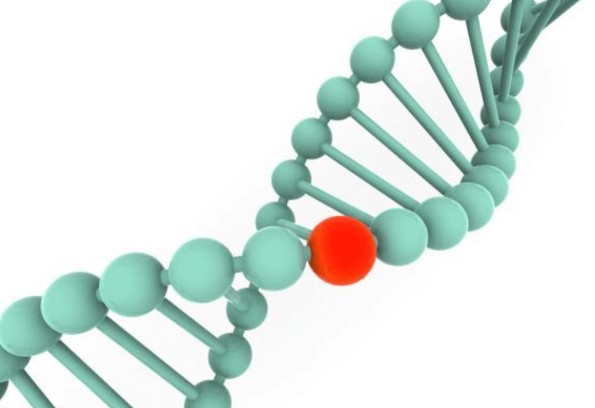On June 29, Feng Zhang’s team published a breakthrough study in the leading academic journal Nature: announcing that Fanzor protein is the first RNA-guided DNA cleavage enzyme found in eukaryotes. With further optimization, Fanzor is expected to be a more precise and easily deliverable gene editing tool to human cells than the existing CRISPR/Cas system.
This is not the only recent good news in the field of gene editing.
On June 8, the U.S. FDA accepted a marketing application for exagamglogene autotemcel (exa-cel), a gene editing therapy jointly developed by CRISPR and Vertex, for the treatment of severe sickle cell disease (SCD) and transfusion-dependent beta-thalassemia (TDT), and granted it priority review status for the treatment of SCD.
This is the world’s first gene editing therapy to enter the marketing process, meaning that after an 11-year development race, the “finish line” for gene editing therapies is finally in sight.
From CAR-T to mRNA to gene editing therapies, the modern pharmaceutical industry may truly enter the era of small molecule chemical drugs, large molecule biologics, and CGT (cell and gene therapies) running side by side.This era will be accompanied by a “rewrite” of the regulatory review paradigm and the adjustment of corporate pipeline priorities.

History of Gene Editing
1973: The first genetically engineered organism – a bacterium that can resist antibiotics when a gene is added.
1974: The National Academy of Sciences suspends genetic engineering experiments until safety issues can be examined.
1975: Biologists establish risk assessment principles to minimize (mitigate) risk, emphasizing public participation and transparency.
1982: FDA approves synthetic insulin, the first genetically engineered human drug.
1994: Calgene introduces the first genetically engineered food, the Flavr Savr tomato, which stays firm when ripe.
1996: Monsanto introduces the first genetically modified crops, and soon these genetically modified foods take over the market.
2003: Geneticist Austin Burt is the first to propose a “selfish gene” – a gene guaranteed to be inherited by most offspring – that could be used as a biological control against another species. But the idea was still theoretical at the time.
2012: Researchers at the University of California-Berkeley and the Broad Institute discovered that CRISPR, a bacterial immune system, could be used as a gene editing tool to make specific changes to DNA anywhere in an organism’s genome.
2014: Kevin Esvelt et al. publish a paper showing how CRISPR can be used to make genetic modifications that permanently alter or eradicate them.
2015: First gene drive lab fruit fly, first gene drive mosquito.
2016: Gene drives have great potential for agriculture, disease reduction and conservation, but more research is recommended before such organisms are released into the environment. More than 150 groups called for a moratorium on gene drive research, but the moratorium was lifted in the United Nations Convention on Biological Diversity (UNCBD).
2017: The first gene drive mammal. the FDA passes a gene alteration treatment for cancer.
The core of gene editing technology is a molecular tool, CRISPER-Cas9, which was discovered in 2012. have been discussed.

Global Market:
Top drug companies try to “turn the other cheek” as popular tracks get crowded
The world’s first CGT therapy was reportedly born in China, Gendicine, a product approved in 2004 from Shenzhen Sabinox; as of Q1 2023, 107 CGT therapies have been approved for marketing worldwide.
And CGT began to be known and hotly discussed by the public on a large scale through two periods:
Period I: In 2017, the world’s first CAR-T product was approved for marketing by the US FDA, and hematological tumors were no longer terminal diseases and became curable or long-term controllable chronic diseases.
Period 2: In 2020, the new mRNA vaccine was launched, and Pfizer was able to regain its position as one of the top pharmaceutical companies in the world (with revenues exceeding USD 100 billion in 2022).
Along with these two periods, global pharmaceutical companies have begun to layout these segments. As of June 2023:
8 autologous CAR-T therapies are available globally (from: Novartis 1, Gilead 2, BMS 2, Legendary Biologics/Johnson & Johnson 1, Fosun Kite 1, WuXi Juno 1).
There are 3 mRNA New Crown vaccines available globally (from: Pfizer/BioNTech 1, Moderna 1, Shih Pharmaceutical Group 1).
However, from the second half of 2022, due to the crowded CAR-Ts track and serious homogenization, the application dividend of mRNA in the new crown field has bottomed out, and the head pharmaceutical companies have started to readjust the direction, including: small nucleic acid drugs, mRNA therapy, mRNA+CAR-T/gene editing, in vivo gene editing, CAR-Ts autoimmune disease treatment, etc.
GSK: Entering into small nucleic acid drugs
In April 2023, GSK announced its withdrawal from the track of “transgenic cell therapy” (mainly CAR-T, TCR-T, etc.). Since then, there is news that GSK may be optimistic about oligonucleotide technology and intend to enter the small nucleic acid drug field (RNA therapy).
Small nucleic acid drug is one of the most mature CGT segments (belonging to RNA therapy), which mainly treats diseases by interfering or regulating the expression of genes; including oligonucleotide, small interfering RNA (siRNA), etc.
xtra Moderna: the first mRNA therapy for rare diseases
After the success of mRNA technology in the new crown epidemic, Nature predicts that it will be more applied to more other therapeutic and preventive fields, especially oncology and rare diseases.
Major global layout companies include: Pfizer/BioNTech, Moderna, CureVac, etc;
Major layout companies in China include: Abbott Bio, Jia Chen Xihai, etc;
In May 2023, Moderna presented interim data from the Phase I/II clinical study of its investigational mRNA therapy mRNA-3927 for the rare disease propionic acidemia (PA) at the annual meeting of the American Society for Gene Cell Therapy (ASGCT). This is also the first clinical trial results of mRNA therapy as an intracellular protein replacement therapy to be published.

Pfizer, Moderna, Regeneron: mRNA technology combined with CAR-Ts/gene editing
mRNA technology has two most core parts: delivery system and encoding mRNA itself; and “delivery system” is one of the serious shortcomings of CAR-Ts and gene editing therapies. Therefore, the combination of mRNA technology and CAR-Ts/gene editing may have a 1+1>2 effect, especially in vivo gene editing.
In 2022, Pfizer entered into a collaboration with gene editing headliner Beam Therapeutics to leverage its strengths in mRNA/LNP to jointly advance in vivo base-editing therapies for rare genetic diseases of the liver, muscle and central nervous system.
In February 2023, Moderna entered into a collaboration with Life Edit Therapeutics to develop in vivo mRNA gene editing therapies.
In 2023, Regeneron partnered with Intellia Therapeutics, a gene editing head company, whose NTLA-2001 uses LNP for delivery to achieve transthyretin amyloidosis (ATTR) treatment, which is now in phase 1 clinical, and is an example of mRNA-LNP technology + gene editing.
Lilly appears to have recently ramped up its in vivo gene editing pipeline.
In May 2023, Lilly entered into a collaboration with gene editing company Scribe Therapeutics to develop “in vivo gene editing therapies” for specific neurological and neuromuscular diseases for a total of more than $1.5 billion.
In June 2023, Verve Therapeutics for more than $500 million to advance Verve’s preclinical “in vivo gene editing therapies” focused on lipoprotein (a).
In June 2022, Novartis partnered with Precision BioSciences to develop in vivo gene editing therapies.
Precision Biosciences, founded in 2006 in the United States, is the inventor of the ARCUS genome editing technology.
Using this proprietary technology, the development projects mainly include in vivo genome editing projects for the treatment of hemoglobinopathies and allogeneic CAR-T projects for the treatment of cancer.
According to industry insiders, “new delivery technologies” are essential to achieve the next stage of transformation of gene editing clinical therapies.
Current delivery tools, such as liposomal nanoparticles (LNP) and viral vectors, are not perfect and are deficient in terms of hydrophilicity, immunogenicity, or long-term effects. Who breaks through this technology first in the future or will become the leader in this field.
At the end of May 2023, Novartis said that its future CAR-Ts pipeline for autoimmune diseases will be prioritized over oncology.
In June, AstraZeneca announced an agreement with Quell Therapeutics, a biotechnology company focused on engineering Treg cell therapies, to develop multiple CAR-Treg cell therapies or for the treatment of type 1 diabetes (T1D) and inflammatory bowel disease (IBD).
CAR-Treg cells: Research has focused on the treatment of autoimmune diseases and transplant rejection. The introduction of CAR-Treg cells can enhance immune regulation, suppress abnormal immune responses and inflammation, and improve the symptoms of autoimmune diseases and transplant outcomes.
The shift from “tumor therapy” to “autoimmune disease therapy” may become the new “mainstream direction” of CAR-Ts.
